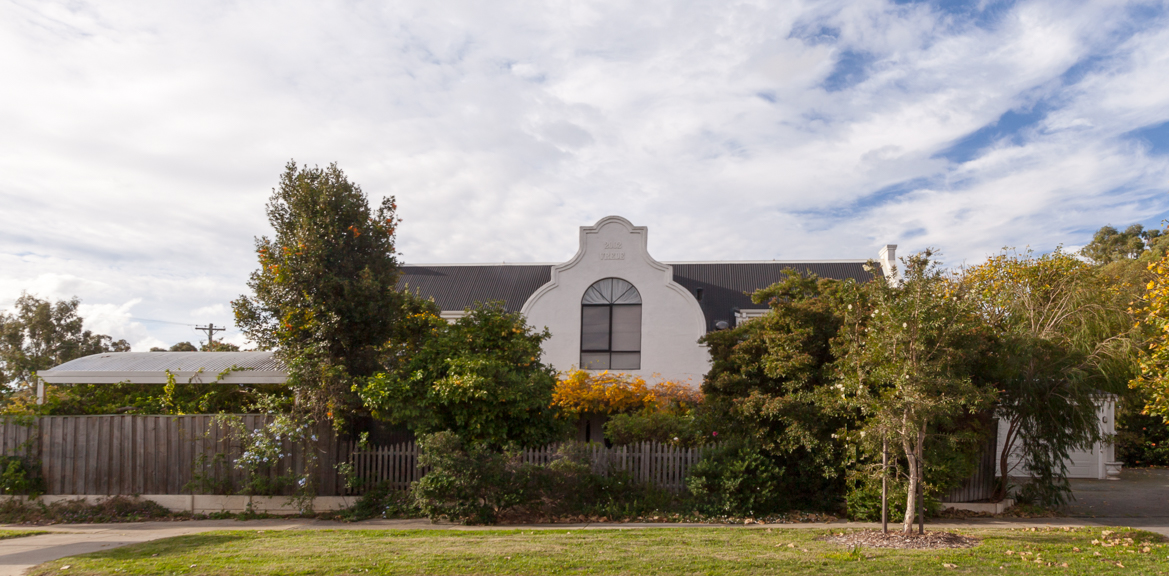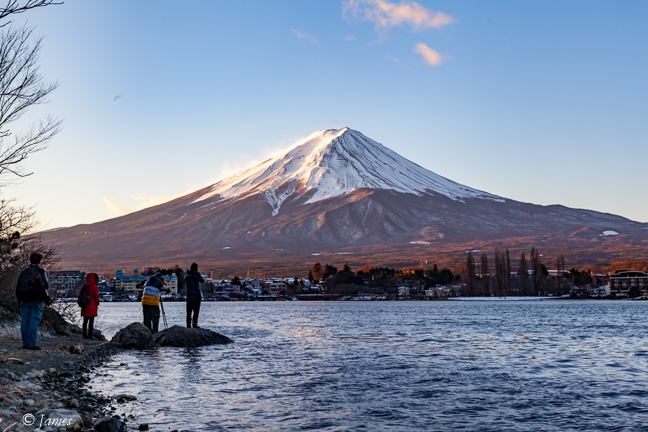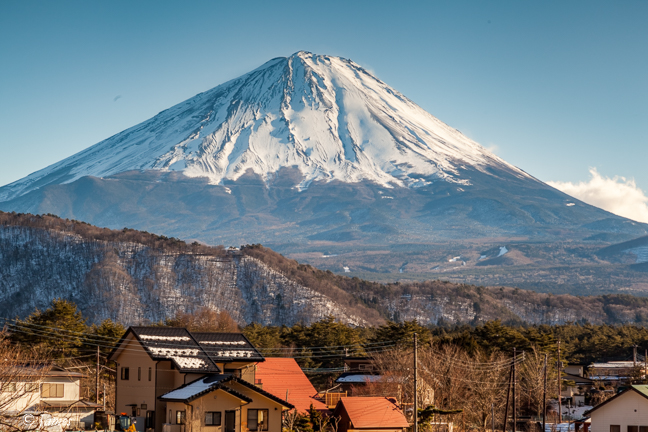Several places are recommended for good views of iconic Mt Fuji which is the tallest mountain of Japan and an active volcano, peaking at 3,776 meters.
Today I hoped to shoot from several spots around the lakes.
I drove a short way to the small carpark on a peninsula on the eastern side of the lake, under the bridge across the lake, to find a few others there already in the -7C dawn. A slight wind added to the chill. The mountain is difficult to shoot as the snow is so bright, and the trees below are so dark in the shadows. I realised that a partial filter could possibly work. Meantime I bracketed 3 shots to merge later, and moved on to the Music Forest area.
The Kawaguchiko Music Forest (Kawaguchiko Orgel no Mori) is a small theme park and museum devoted to automatic musical instruments. Its main hall displays antique music boxes, mechanical organs and other automatic musical instruments mostly from European countries. The largest of them is a French fairground organ from 1905 which takes up an entire hall and plays every 30 minutes. The main building also houses a concert hall where classical musicians from around the world perform. The park outside encloses European style gardens with good views of Mount Fuji across the lake. Walking paths lead among the garden’s manicured lawns and winding canal, connecting the museum restaurant, shops, chapel and rose garden to one another. Too early for an entry, but there are several other suitable places along the lake edge.
After breakfast we re-visited these sights briefly, and then attempted to find a replacement jacket in two shops without success. The language barrier has been intense here; most have as much English as I have Japanese, but we found the (expensive) answer used at a chemist. A mobile-like gadget the one can speak to, which translates to many languages. So we spent some time looking for the electronics shop that sells these pocketalk’s. Apparently they are selling fast here. (Note Hilary tried to register it and it has not proved easy. I’m not sure we will have it working anytime soon.)
In the late afternoon we drove to Iyashi no Sato on the western side. This site has a good view, as well as the old thatched buildings. We took a few shots and headed home as it was too late to visit the site. And it will look better in spring anyway.
Iyashi no Sato stands on the site of a former farming village on the western shores of Lake Saiko. The village was destroyed by a landslide during a typhoon in 1966. Forty years later the village’s traditional thatched roofed houses were reconstructed and reopened as an open air museum and traditional craft village where people can learn about the culture and try out to purchase local handicrafts. The main street of the village is lined with weeping cherry trees and offers views of Mount Fuji. The village is now made up of more than twenty houses that have been converted into shops, restaurants, museums and galleries. Each of the shops specialises in a traditional craft such as pottery, incense or weaving. Some of the handicraft shops, provide hands on workshops for visitors to try making traditional products, including washi paper, charcoal and soba noodles. A few of the houses contain museums, such as the Watanabe House which has exhibits on the daily life of the farmers who used to live in the region. There is also an Erosion and Sediment Control Museum explaining the causes of the landslide that destroyed the village, and techniques used to prevent such disasters. The remaining houses include an art gallery that displays local artworks, a produce shop and a portrait studio where visitors can try on kimono or samurai armour for a small fee and take photos. Restaurants and rest houses can also be found around the village.



Absolutely stunning. You have a great way with words.
Thank you.